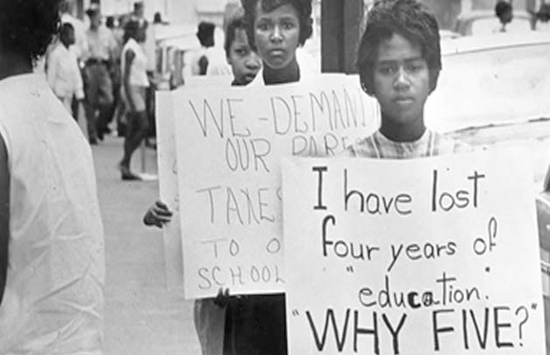It has been over 60 years since the Supreme Court declared segregated schools unconstitutional in the landmark, Brown v. Board of Education. The decision ushered in a contentious era that brought sweeping changes to schools around the nation.
The ruling was based on the court's finding that segregated, “separate but equal” schools were a myth, not a reality.
Now a recent study of black students who attended school prior to the decision tends to bear this out. Those who attended desegregated schools ended up performing better on certain tests of their mental abilities years later, presumably a measure of the lasting effects of receiving a better education.
For decades “separate but equal” was used to justify separate schools for whites and blacks. Segregationists had claimed that as long as the schools were of equal quality, they were not violating the fourteenth amendment's equal protection clause.Those who attended integrated schools scored significantly better on the language and perceptual tests, presumably a legacy of desegregation.
Researchers looked at 420 adults, average age 69, who took part in the Baltimore Study of Black aging. Of these participants, 118 had attended desegregated schools and 302 had attended segregated schools prior to 1954. All were given tests assessing global cognition, reasoning, memory, working memory, language, and perceptual speed.
Those who attended integrated schools scored significantly better on the language and perceptual tests, presumably a legacy of desegregation.
Desegregated schools received more funding than segregated ones — another measure of how the two school types were not truly equal — and the authors believe that this played a part in the study's findings.
The research team is disturbed by what they see as a recent tilt towards more segregated schools: “It is very interesting to observe the current patterns of desegregation among public schools in many states, including Maryland. Many schools systems are showing a trend towards re-segregation. Time will tell what impact this trend will have on cognitive aging disparities in the future.”
As the Supreme Court declared in Brown, “separate educational facilities are inherently unequal.”
An article on the study appears in The Journals of Gerontology, Series B: Psychological Sciences and Social Sciences.





